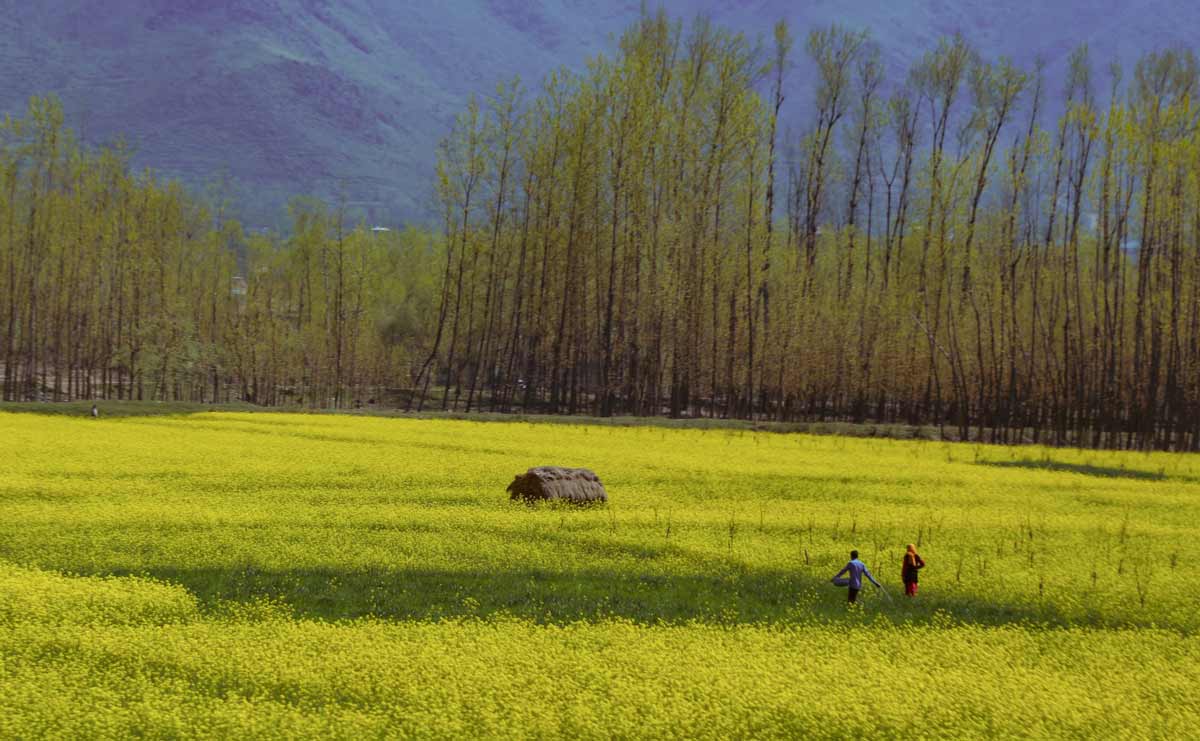On 2 December 2020, an incident happened which did not grab eyeballs as it came about amidst the raucous and partisan U.S. presidential elections and the two waves of a raging COVID-19 pandemic that had engulfed in globe in its fury. On that day, the 53 member states of the Commission on Narcotic Drugs (CND), the UN’s central drug policy-making body, reviewed a series of World Health Organization (WHO) recommendations on cannabis and its derivatives, and voted to remove cannabis from Schedule IV of the 1961 Single Convention on Narcotic Drugs — where it was listed alongside specific deadly, addictive opioids, including heroin, recognized as having little to no therapeutic purposes. This had generally discouraged its use for medical purposes.
Following this move, the US House of Representatives passed a bill on 4 December to decriminalize the use of cannabis. This marked the first step in legalizing the recreational and medicinal use of cannabis or marijuana in that country.
These historic moves resonated across the planet with the labour of pro-marijuana activists finally being rewarded with non-demonization of both cannabis and cannabis resin. In this progressive development, India too played a key roleand was one among the 27 countries that voted in favour of the move and expressed the country’s intent to get cannabis reclassified into a category which does not see it as a deadly substance which should be criminalized.
How did the ban come about?
In the 1930s, Harry Anslinger, the first Commissioner of the USA’s Federal Bureau of Narcotics, pioneered the country’s decidedly racist war on drugs as for him. Ignoring its benefits and the fact that harms of moderate consumption were unproven, he declared marijuana to be a “scourge on society, ruining the moral fabric of America, and decreasing Americans’ capacity for gainful employment.” As with opium earlier, he proclaimed it a villainous substance brought in and consumed by immigrants, primarily Mexicans, which posed a threat to the American way of life.
Since he considered jazz a dangerous mongrel form of music, he persecuted jazz musicians, particularly jazz singer Billie Halliday, but that is another story.
Later, this propaganda for the war on drugs was pushed onto the global stage and the goal of cannabis prohibition became paramount. This was manifested in the UN’s 1961 Single Convention on Narcotic Drugs, a document that has since shaped drug policies across the world. Here, a Schedule IV substance is a category reserved for the most dangerous of drugs like heroin and now, cannabis was included in it. The western world’s perception of cannabis as a menace with no redeeming features was universalized. India protested against this stance and had clauses inserted that made exceptions for horticultural and industrial use.
The Real Reason!!
The real reason behind the all-round condemnation and banishment of cannabis was a political agenda, with an economic motive. Both cannabis and industrial hemp are derived from the species Cannabis sativa. Hemp, which has historically had over 25,000 diverse uses, can be used to make a wide range of products, including paper, rope, textiles, clothing, paint, biodegradable plastics, insulation, biofuel, food, and animal feed. In the 1930s, the plant was referred to as a billion dollar crop in the U.S.A. simply because of the large number of uses it was being put to use for. Besides, it was inexpensive. The plant was in a similar situation in almost every country around the world. The companies with vested interest in the new petroleum based synthetic textiles such as DuPont and the large and powerful newspaper / lumber barons saw hemp as the biggest threat to their businesses. As the liquor, tobacco and timber industries lagged behind, these companies resorted to large scale propaganda.
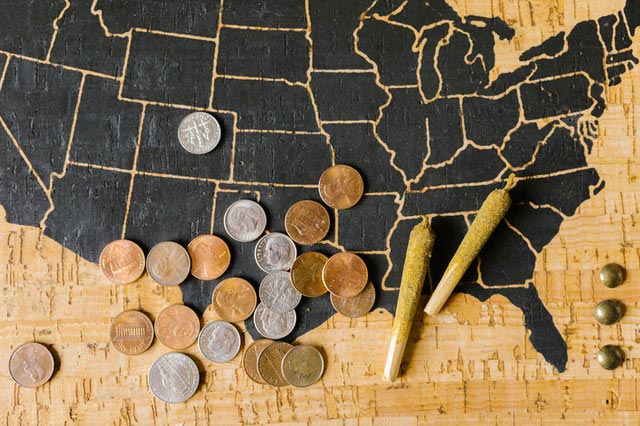
In September 1937, the U.S. government, under the influence of the lobbying of several powerful groups, proposed prohibitive tax laws, and levied an occupational excise tax upon hemp dealers. Later that year hemp production was banned altogether. The Canadian government followed suit and prohibited production under the Opium and Narcotics Act on August 1, 1938. The rest, as they say, is history.
What does the UN’s Cannabis decision mean?
Cannabis was on the CND’s prohibited list for nearly 60 years warranting strict control on its production, supply, consumption and even use for medical purposes.
The decision of the UN has opened the door to recognise the medicinal and therapeutic potential of the commonly-used but still largely illegal recreational drug. This reclassification of cannabis could “act as catalyst for countries to legalize the drug for medicinal use, and reconsider laws on its recreational use”.
What is the Situation now?
Several legislations had been drafted in different countries of the world to make consumption, trade, and sale and purchase of marijuana in their respective jurisdictions as illegal. However, in the present era of Internet and superfast communication across the globe, an increasingly aware society is now beginning to question outdated norms of dubious origin.
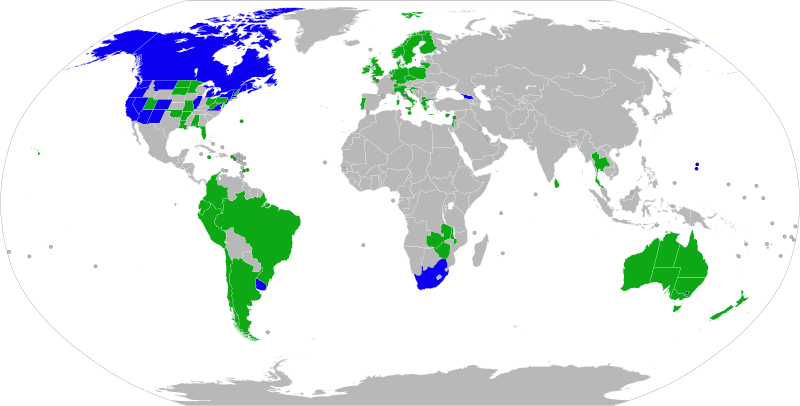

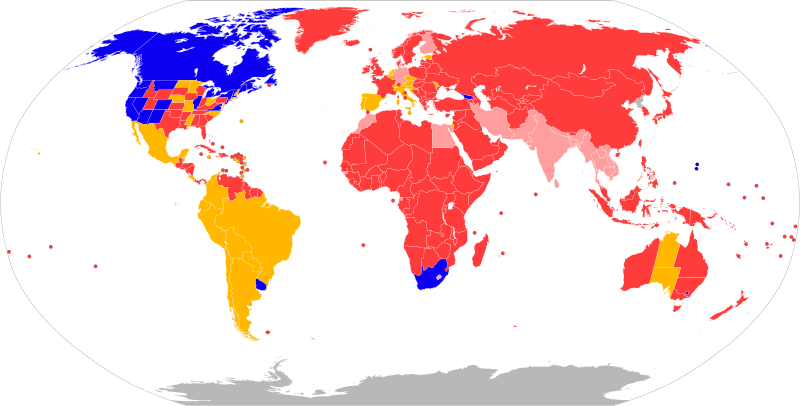

Long before the UN’s decision, Uruguay had legalized recreational cannabis in December 2013 and was followed by South Africa in September 2019 and Canada followed suit in October of the same year. As of now, in Georgia, only consumption of cannabis is legal, not cultivation or sale for recreational purposes whereas in Netherlands, sale of cannabis is allowed through licensed sellers. Belgium, Mexico and Belize have allowed the recreational use of marijuana. Denmark, Finland, Czech Republic, Colombia, Chile, Brazil, Australia, Argentina, Barbados, Ecuador and Cyprus are the countries that have allowed cannabis to be used only for medicinal use.
History of Cannabis in India
Cannabis has been popular in India since the beginning of recorded history. In the country, cannabis use has been historically bound to faith and mysticism. It is said to be a drug that helps the user attain “ecstasy” in the original sense of the word.
Kansas University geographer Barney Warf, in his 2014 research paper ‘High Points: An Historical Geography of Cannabis’, speculates that the plant was most likely brought to India by Aryan migrants between 1000 and 2000 BC. It is treated as a sacred plant in the Vedas, considered a source of joy. The association of Lord Shiva with bhang and charas is part of the folklore. The Sushruta Samhita, an ancient medical treatise, mentions bhanga, as a medicinal plant, and recommends it for treating catarrh, diarrhea and phlegm. According to some scholars, in the Vedic period, bhang was used to prepare Soma, an intoxicating ritual drink that has been highly praised in the Rigveda. Bhangafinds mention in the Atharvavedaas one of the five sacred plants that relieve anxiety.
Regulation of cannabis or its bhang form began with the British becoming a colonial power in India. In British India, the Indian soldiers reputedly sipped bhang even as their foreign counterparts took swigs of whiskey before battle.The British Parliament enacted a law in 1798 to tax cannabis byproducts on the pretext of “good health and sanity” of the “natives” to reduce consumption but the British did not criminalize its use.
Even today, we come across ‘holy men’ smoking marijuana in public and photographs of them blowing clouds of smoke are almost symbolic.
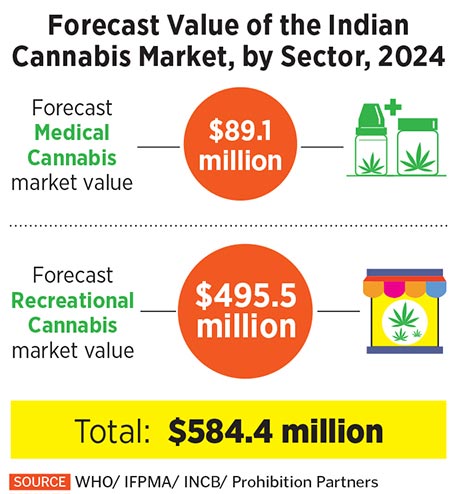
Present Situation in India
India, having battled long the pressure that the USA was exerting on it since 1961, to make cannabis illegal, finally caved in 1985. The government enacted the Narcotics, Drugs and Psychotropic Substances Act (the NDPS Act) and made the sale, consumption, production and transportation of cannabis illegal in the country.
The NDPS Act strictly regulates cannabis plant and its products. Charas, the resin extracted from the cannabis plant, is separately mentioned as regulated substance under the law. It is also known as hashish or hash. Cannabis oil or hashish oil is also regulated in India.
Why Cannabis should be Legalized in India?
After going through a plethora of evidence both for and against, there are certain reasons for legalizing cannabis in India, which are enumerated as follows:
(i) Legalizing cannabis will help to eliminate illegal trade and associated crimes
Cannabis legalization will help to curb and finally eliminate its illegal trade. The overboard and legal industry will replace the black market production and distribution and will help to clip the wings of the mafia. As the industry would be governed by rules and regulations, the trade will have the government, farmers, merchants and retails clerks and not criminals, drug dealers and other shady characters.
It is a well-known fact that most terror groups make their money from illicit drug trade. Once cannabis is legalized, a major source of terror funding would be cut off.
(ii) Taxing Cannabis will increase government’s revenue
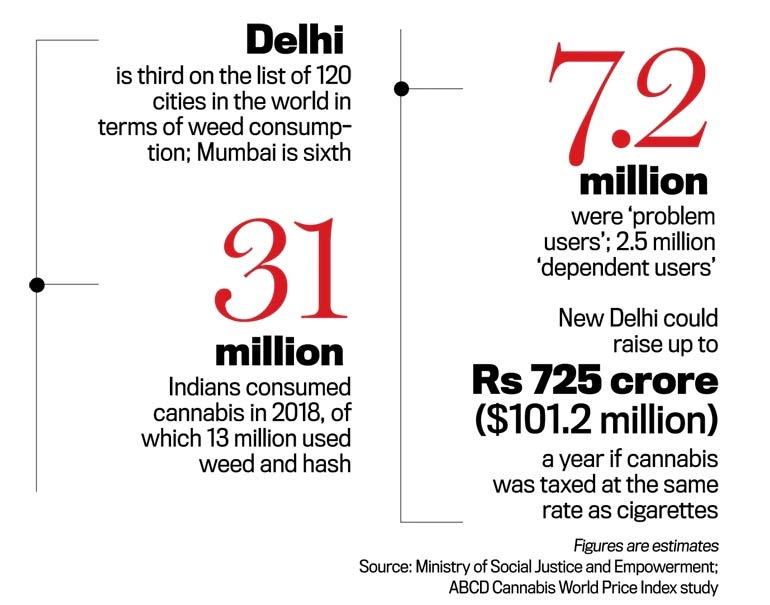
Given India’s production capacity of cannabis, the government stands to earn huge amounts of revenue if it were to legalize a product that continues to exist despite attempts to crack down on it. According to a 2018 study by German data firm ABCD, New Delhi could raise up to Rs 725 crore a year, while Mumbai could raise Rs 641 crore if weed were taxed at the same rate as the most popular cigarette in the city. If the average US tax rate on marijuana is applied, Delhi could raise Rs 225 crore and Mumbai Rs 199 crore.
(iii) It will create millions of Job opportunities
The total worldwide cannabis market, that includes both the illegal and the legal parts of it, is estimated at $ 344 billion. It is estimated that the legal market is worth $66 billion.
There are a very large number of jobs that can be created by the cannabis industry and help reduce India’s unemployment rate. Hemp, a fibre made from the stem of cannabis plant, is used in textiles. Seeds of cannabis plant are used by cosmetic manufacturers and neutraceutical companies.
(iv) Cannabis use has Medical Benefits
The use of cannabis has dozens of medical benefits.Cannabis is used for pain management as well as treating post-chemo symptoms, arthritis, skin ailments, mental disorders and metabolic problems. It treats glaucoma, prevents cancer from spreading to other parts of the body, reduces anxiety, slows the progress of Alzheimer’s disease, improves metabolism and is even said to spur creativity in our brain.
Cannabis has been an ingredient in ayurvedic formulations for ages now, and hence the ministry of AYUSH promotes indigenous alternative medicinal systems, allows ayurvedic products to include cannabis, and ayurvedic doctors to prescribe such medicines.
(v) It will help the Local Farmers in certain regions to grow a much-in-demand Cash Crop.
In states like Himachal Pradesh and Tamil Nadu, where cannabis plants are grown, marijuana is the only source of income for many locals. However, being a banned substance, the farmers are forced to sell it at a very cheap price to the drug dealers and they face additional pressure from the police as well, who are paid to destroy the cannabis plantations. Legalizing cannabis will end this ‘war on drugs’ targeting our own countrymen.
Also Read:
(vi) Cannabis is less Harmful than Alcohol
Consumption of cannabis was never regarded as a socially deviant behaviour any more than drinking alcohol was. In fact, keeping it legal was considered as an ‘enlightened view’. It is now medically proven that alcohol is more harmful than cannabis. Unlike alcoholics, people who partake of cannabis do not indulge in rash driving or violent fights. They tend to be clam and pleasant under its influence.Cannabis has been scientifically proven to be 114 times less harmful than alcohol and tobacco.
(vii) Cannabis addiction is rare
An epidemiological study showed that only 9 % of the people who use cannabis end up being clinically dependent on it. The ‘comparable rates’ for tobacco, alcohol and cocaine stood at 32 percent, 15 percent and 16 percent respectively.
(viii) Prohibition has failed to control the use and domestic production of Marijuana
It is believed that 60,000 kgs of hash and 40,000 kgs of opium is produced in Himachal Pradesh. Out of that, only 500 kgs is seized annually. As per reports, “more than 1,600 hectares of cultivable farmland and an additional 500 hectares of illicitly felled public forests are currently under cannabis cultivation”. The rate is only increasing. Moreover, these days, it is pretty easy to buy marijuana in India and its consumption is widespread among the youth. So it is fair to say that prohibition has failed to curb the ‘problem’.
In conclusion, cannabis laws are outdated and more harmful than the plant itself.
This UN decision could influence the global use of medicinal marijuana and India’s affirmative vote has sparked hopes that the country will join the new global movement towards using the medicinal and commercial potential of cannabis.
Decisive action in favour of deregulation could clearly benefit India in a number of ways such as money by way of sales and taxation, jobs that could be created, a huge boost to agricultural sector, controlling climate change to be fought, and tax revenue to be generated.
The country is at an opportune moment in time and we should not hesitate. The market for cannabis products, both recreational and industrial is on the cusp of major growth. Though China dominates global supply, its grasp over the market will surely weaken if companies consider moving supply chains out of the country, as they have throughout 2020. This sentiment won’t last indefinitely and so, we must be decisive to take advantage of the developing situation.
Latest:
~ News4masses is now also on Google news
~ If you want to contribute an article / story, please get in touch at: news4masses[at]gmail[dot]com




